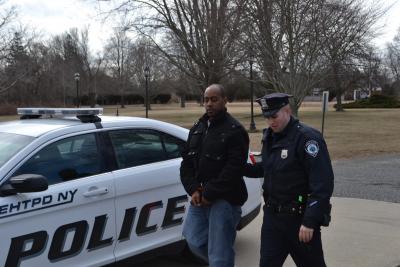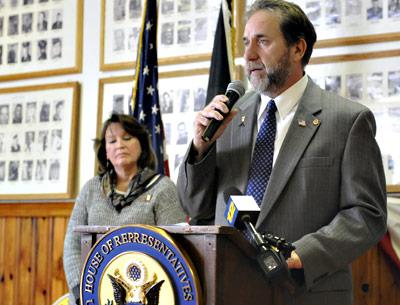Reading, Writing, And Mental Health
Reading, Writing, And Mental Health

Since David Hernandez Barros, a junior at East Hampton High School, hanged himself in the bathroom of his family’s apartment in East Hampton nearly a year and a half ago, mental health issues have assumed unprecedented urgency for school officials tasked with ensuring the safety and well-being of students.
Over the past 18 months, the high school has referred 20 students displaying signs of suicidal thoughts to Stony Brook University Hospital. More than an hour’s drive away, it houses the nearest psychiatric facility.
Since 2009, three Latino students on the South Fork have committed suicide. The 20 students at East Hampton High School represent a wide cross-section of race, ethnicity, gender, and socioeconomic backgrounds and possess no single identifying characteristic.
Taken together, the increasing referrals signify a heightened sense of awareness, with many school administrators and teachers perpetually on high alert, working in tandem to prevent another tragedy.
According to New York State Assemblyman Fred W. Thiele Jr., a proposal is now under way to combine state aid, along with resources from school districts, Southampton Hospital, local governments, and nonprofits to improve access to mental health offerings for children and adolescents residing on the South Fork.
The first of the three-pronged approach proposes the hiring of a full-time child psychiatrist and two full-time social workers at an estimated cost of $320,000, according to a working draft of the proposal. Mr. Thiele is hopeful that state funds would cover half of the anticipated expenses — with local partners combining their resources to foot the other half of the bill.
“I’m optimistic and it’s a high priority,” said Mr. Thiele, in a conversation last week. “We should have an answer for this by April 1.”
He described Adam Fine, the principal of East Hampton High School, as “the guiding force that got this through.”
The two first met last summer to begin brainstorming ways of expanding access to services. Since the start of the year, various stakeholders have gathered for two meetings at Southampton Hospital.
At a Feb. 24 meeting, Mr. Thiele and Suffolk County Legislator Jay Schneiderman, along with representatives from the offices of Representative Tim Bishop and State Senator Kenneth P. LaValle, Robert Ross, Southampton Hospital’s vice president of community and government relations, and administrators from several local school districts and nonprofits, met to finalize the specifics of the proposal.
In addition to the remoteness of the South Fork and the difficulty of retaining qualified, year-round practitioners, the proposal cited rapidly changing student demographics in several local school districts — with a particular emphasis on the rising number of Latino families that have moved to the area over the past decade.
“This clash of cultures has exacerbated issues related to behavioral health for the entire population, especially children,” read the proposal. “Due to a number of factors including geography, fewer year-round residents, and a perception of great wealth, the East End has long needed additional behavioral health services and is now experiencing a crisis that threatens the stability of the small school systems and the communities in general.”
Besides establishing a crisis service during phase one of the proposal, a second phase would expand the crisis team by hiring additional social workers and community health workers. It also proposes establishing a mobile unit, which would travel to areas of urgent need. Finally, a third phase would deploy Stony Brook psychiatrists to Southampton Hospital as part of an expanded psychiatric residency program.
During annual budget talks in recent weeks, Mr. Fine asked the East Hampton School Board for a $30,000 increase in mental health services.
“This year, a number of calls from parents and information from students has made me worry,” Mr. Fine said in a recent conversation. “Whether it be cutting, information on students having breakdowns, or suicidal ideations, I have been concerned with several at-risk situations.”
For Mr. Fine, David’s suicide continues to figure largely, never far from the surface. “It’s always in my mind that it could happen again,” said Mr. Fine. “Not a day goes by that I don’t think about what happened and how we can do our part to prevent it from ever happening again.”
With three suicides in five years, Mr. Fine described it as a “crisis,” noting that the New York State Office of Mental Health designated the South Fork as a “suicide cluster.”
While cognizant that the need is great, Richard Burns, the superintendent, is not optimistic that the money will ultimately come through.
Faced with a state-imposed 2-percent tax cap, the East Hampton School District is looking to cut $1.2 million from its budget — not add to it.
Mr. Burns, along with a handful of other administrators, has become accustomed to receiving panicked calls during evenings and weekends.
“The depth of problems besetting kids is scary,” Mr. Burns said in a conversation last week. Partly, he blames the prevalence of social media, with fantasies of suicide now “an option in the tool belt.”
During after-school hours, when students have received texts from friends contemplating suicide, school administrators are often the first point of contact. “When they see something on Facebook, they call us, not the police,” said Mr. Fine.
“Because of a heightened sense of awareness, we’ve made so many referrals to C.P.E.P.,” Ralph Naglieri, East Hampton High School’s school psychologist, said, referring to Stony Brook’s Comprehensive Psychiatric Emergency Program, designed for individuals experiencing a psychiatric crisis. “We’re not taking any chances.”
With 21 years in the district, Mr. Naglieri observes an increasing number of adolescents beset with psychiatric problems. “What concerns me most is kids having this in their arsenal and using this as a coping mechanism,” he said.
After receiving an urgent call, administrators are next tasked with ensuring the safe transport of the student to Stony Brook University Hospital. If the parents cannot securely transport their child, the police, or an ambulance, are next called to intervene. But after arriving at Stony Brook, administrators report that students almost always return to class the very next day.
According to Kristie Golden, the associate director of operations for the neurosciences divisions at Stony Brook University Hospital, despite the increase in school-based referrals, a pattern that commonly emerges following a student suicide, hospitalizations rarely result.
“A very high percentage of the time they don’t meet the criteria for inpatient admission,” said Dr. Golden. “Unless someone is acutely suicidal, with a plan and a means, or homicidal, outpatient services are generally the recommendation for follow-up care.” The New York State Office of Mental Health — not to mention most insurance plans — prefers the “least restrictive” option available.
But once home, the geographic isolation is yet another hurdle in the complicated maze of ensuring access to regular therapeutic treatment.
For instance, while the Family Service League in East Hampton provides a great array of services, administrators said the waiting list for psychiatric care can be as long as two months. Adolescents contemplating suicide require immediate and sustained counseling — and often multiple visits each week.
While each school district will cover initial psychiatric evaluations, as required by New York State law, it is not required to pay for ongoing psychiatric treatment. For many families, the hourly rates, particularly with practitioners that do not accept insurance, quickly become unsustainable.
Since David’s suicide, Mr. Naglieri estimates that the staff has undergone six separate trainings. “I can’t imagine another school district on Long Island that’s had as much training,” he said. But while the school is staffed with a psychologist and social workers, he is the first to concede that they are educators first and foremost — and not mental health practitioners.
In future months, he is hopeful that Southampton Hospital might be the first point of entry, able to supply both beds and access to a full-time psychiatrist.
“We as a school and as a community have to continue doing whatever we can to get more services on the East End of Long Island. I understand the budgetary constraints and realize we won’t get everything we wish for,” said Mr. Naglieri. “But we’re moving in the right direction, and people are finally hearing us.”







